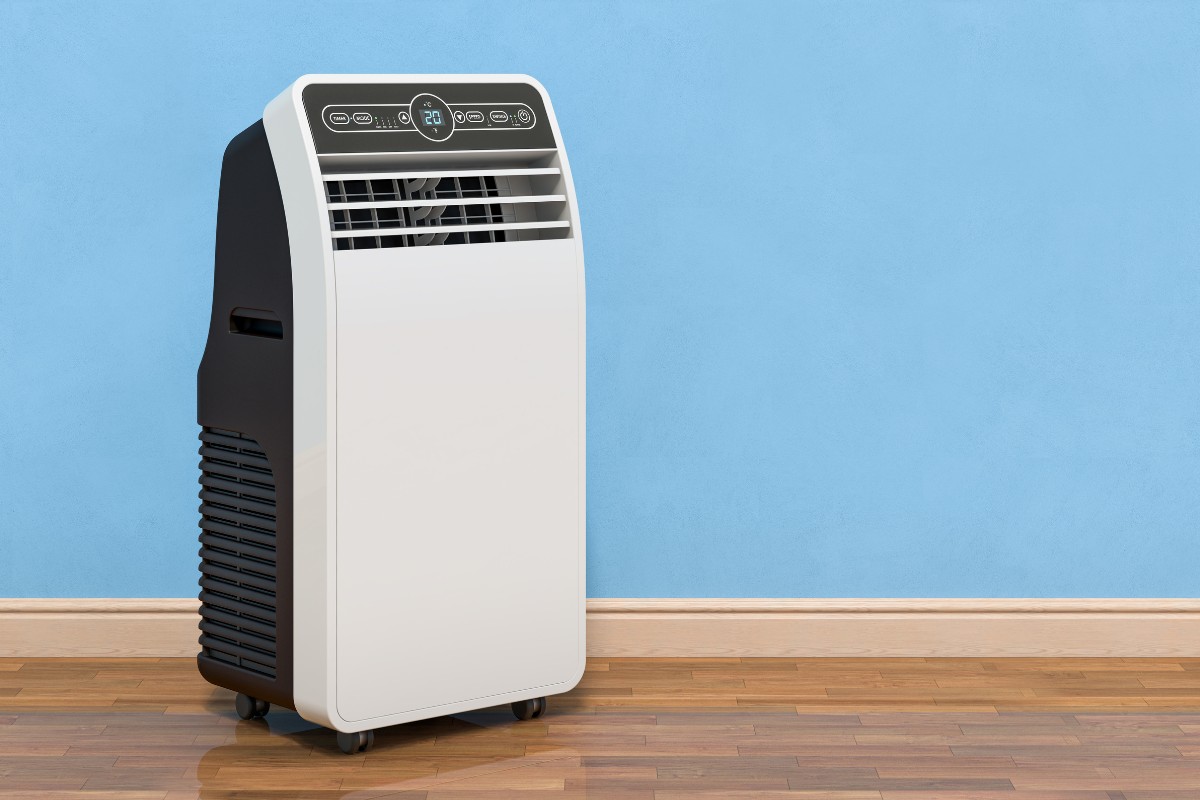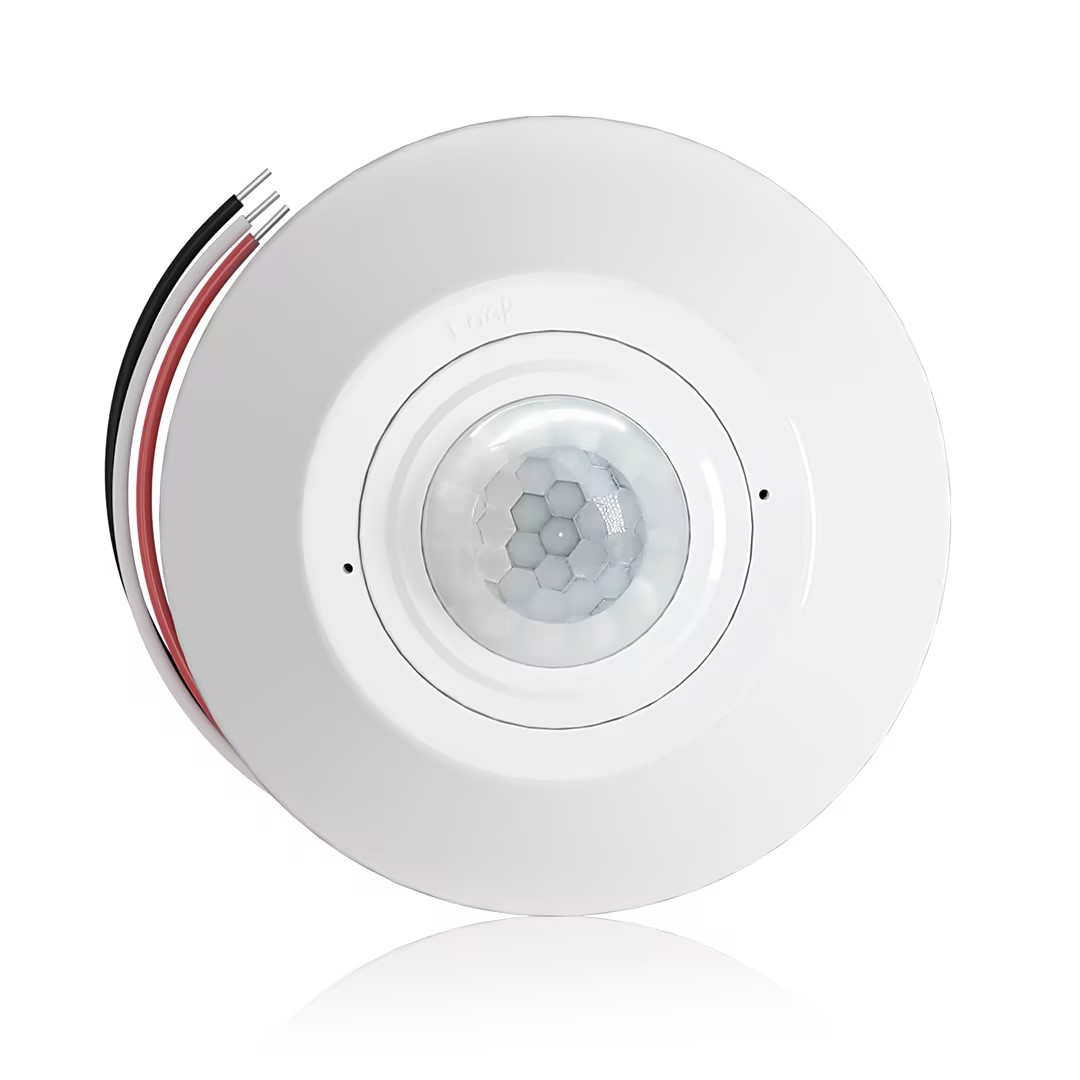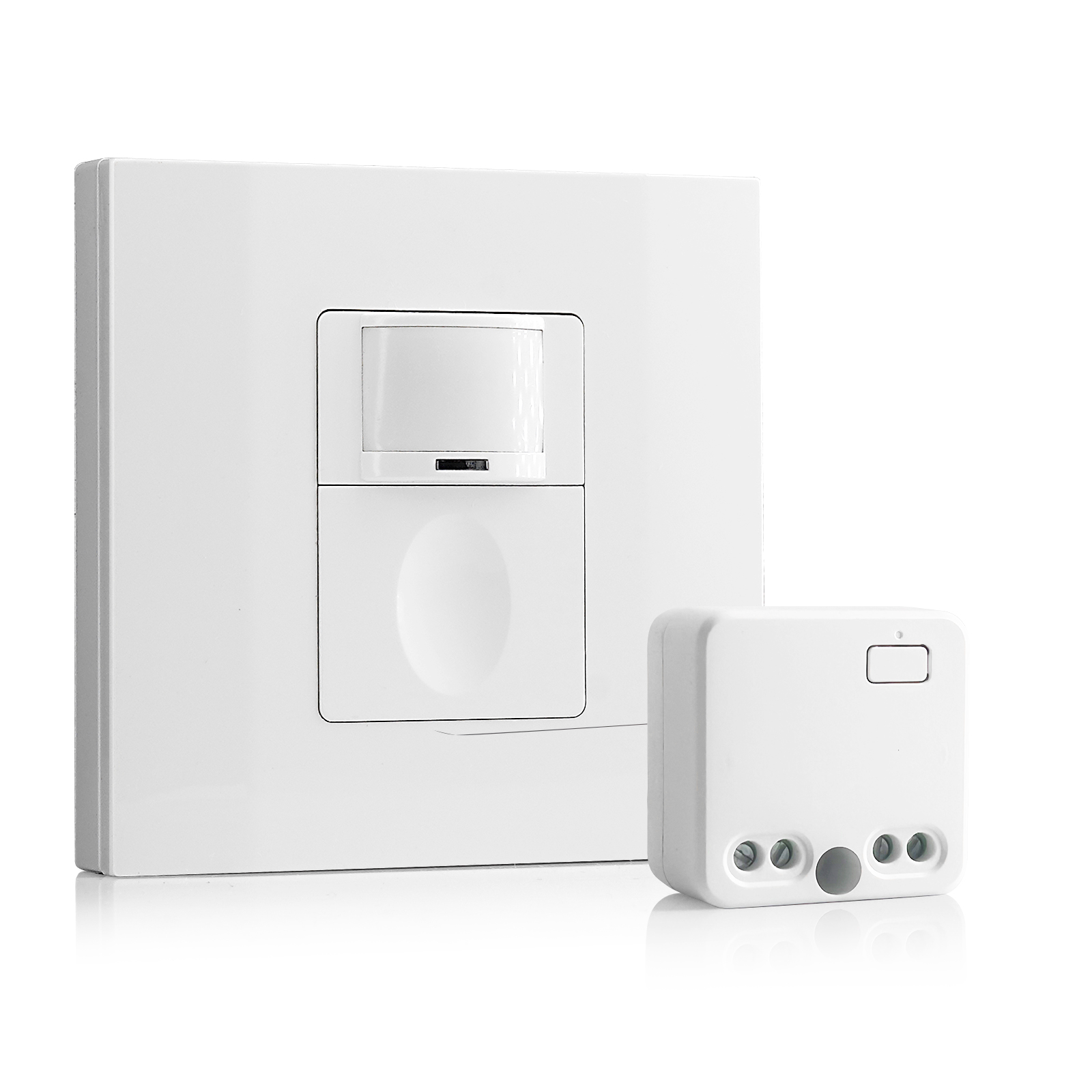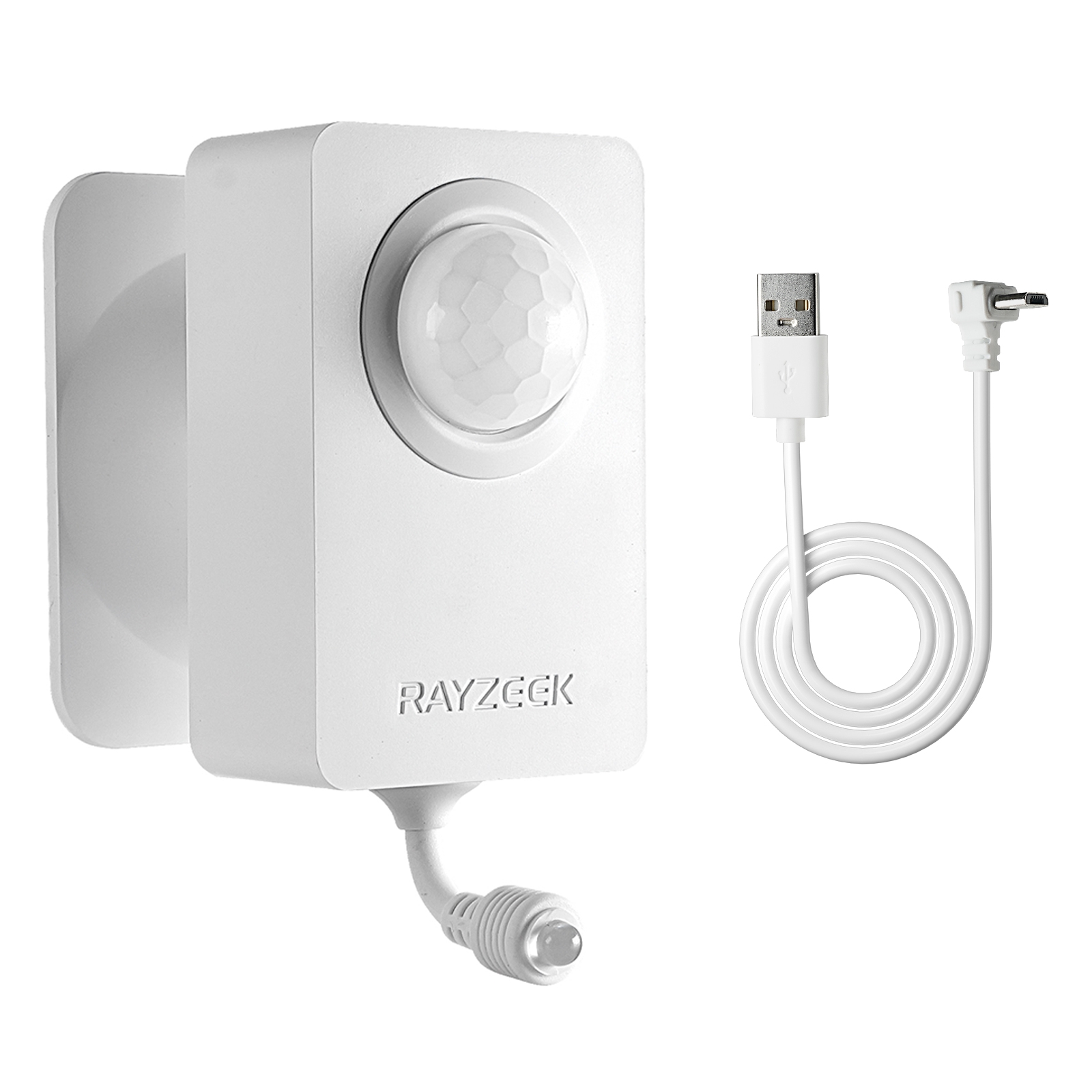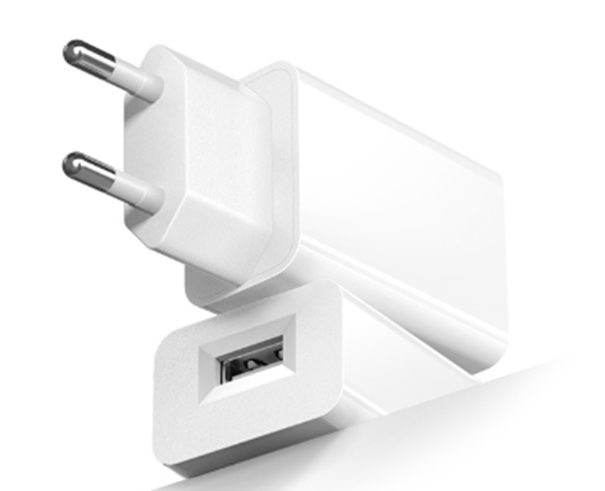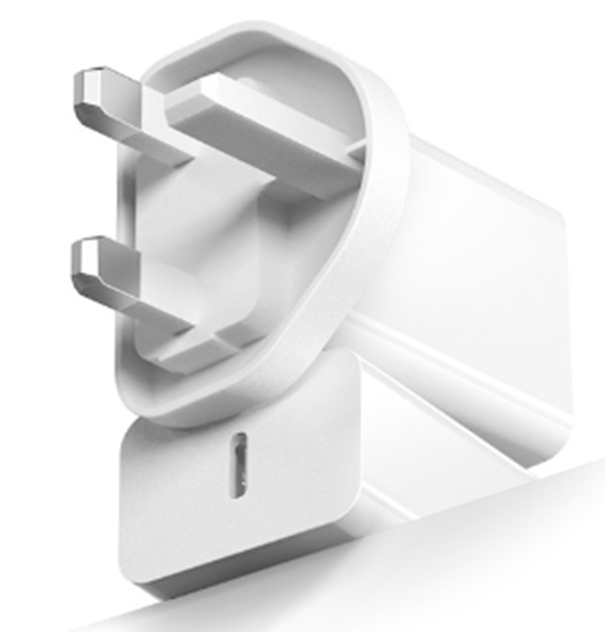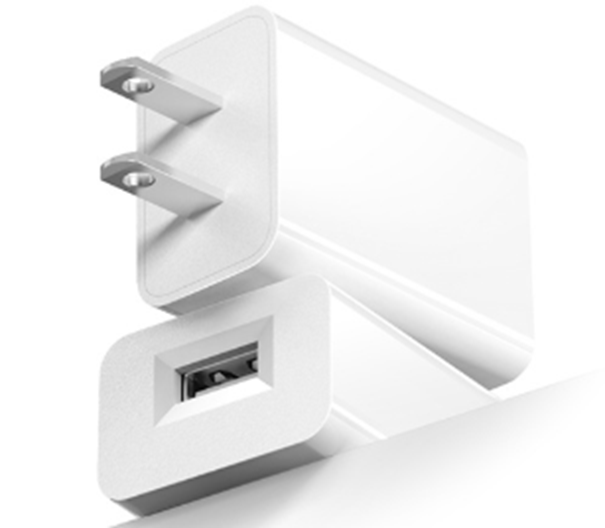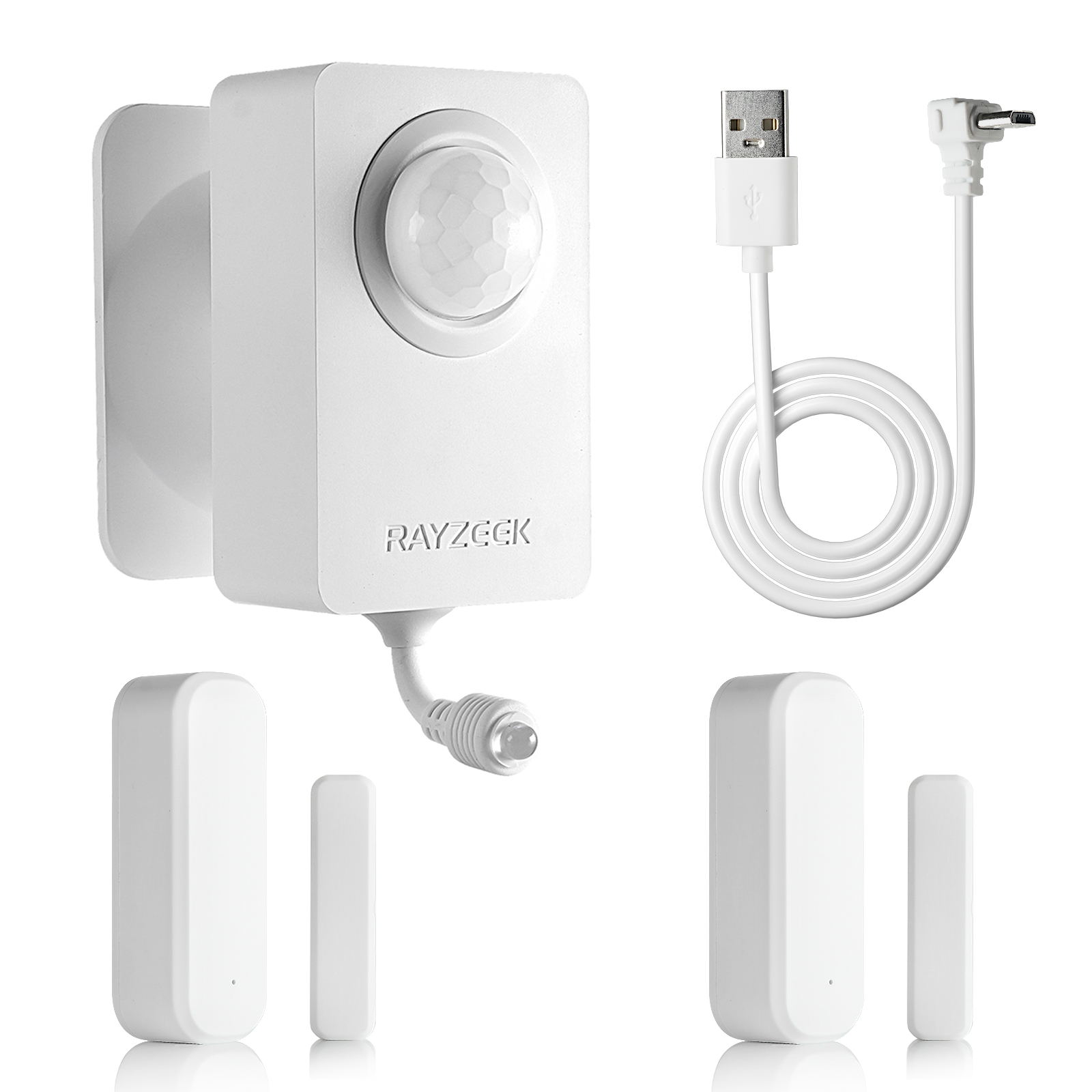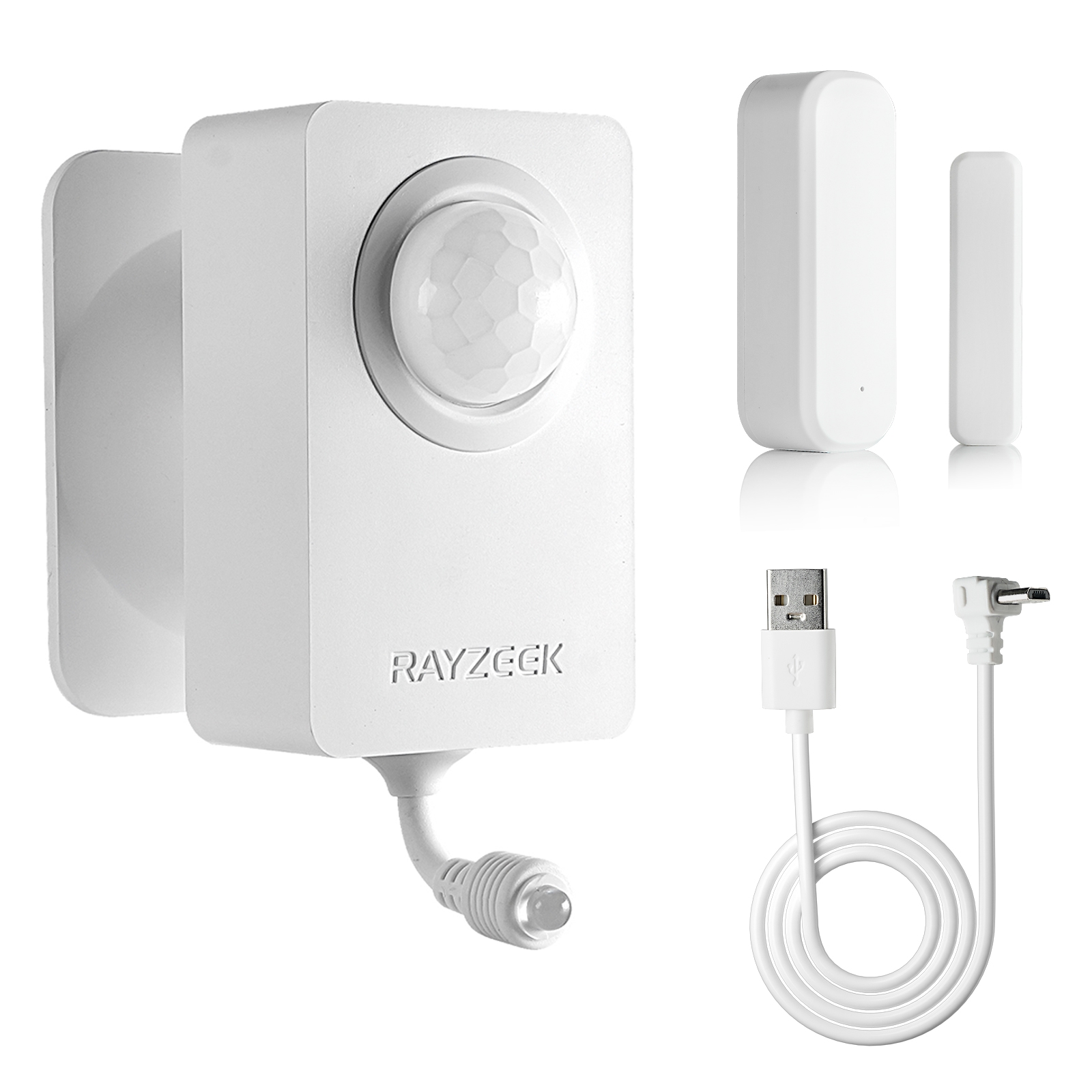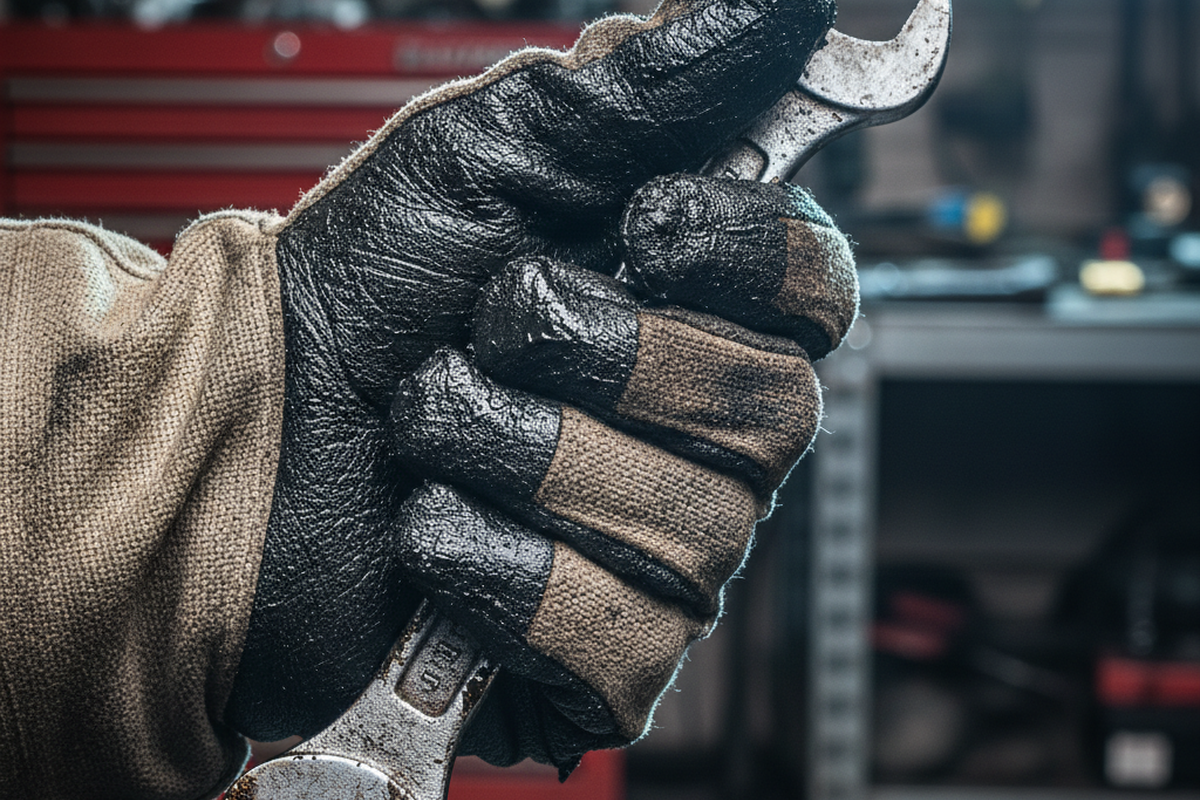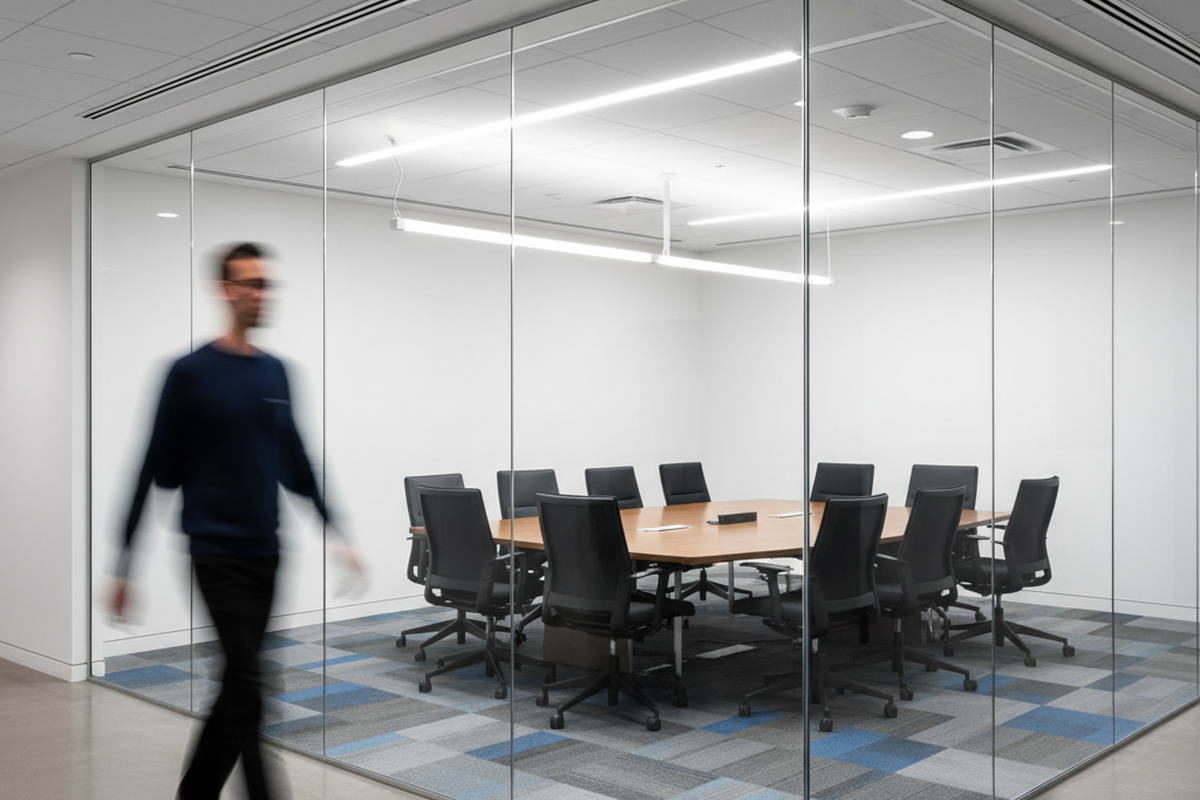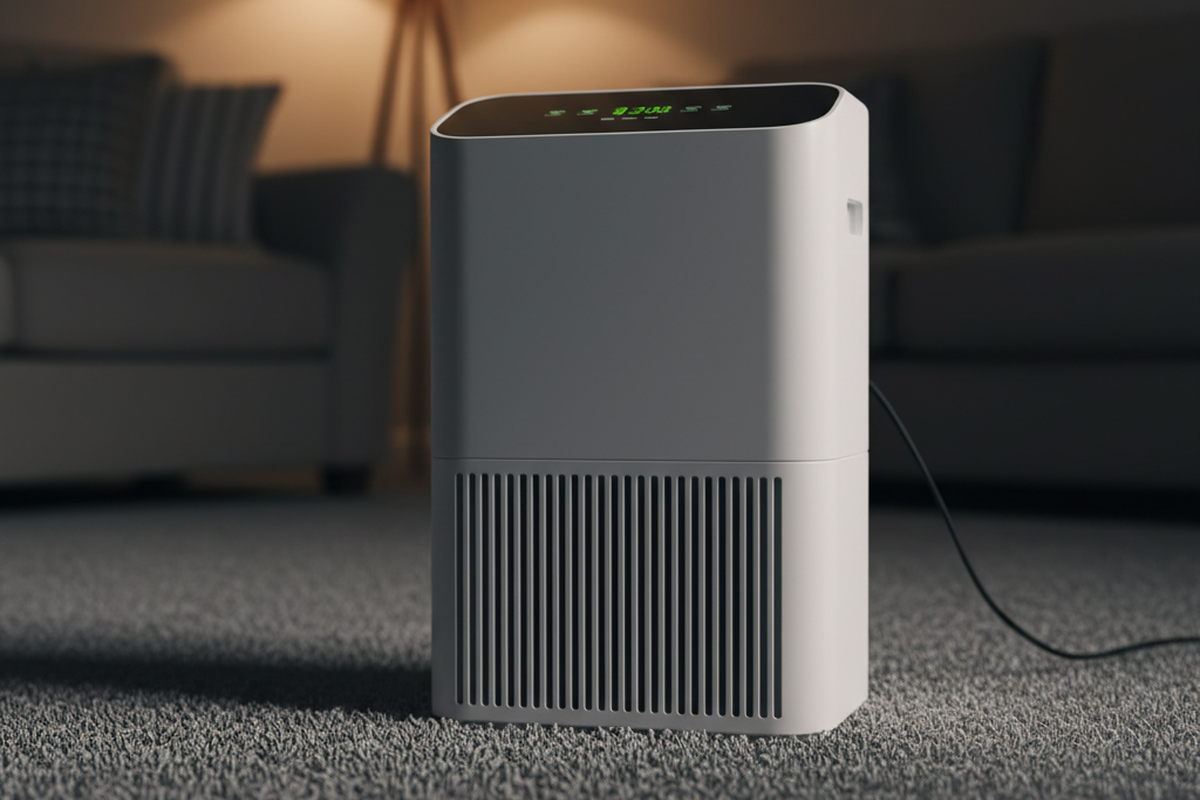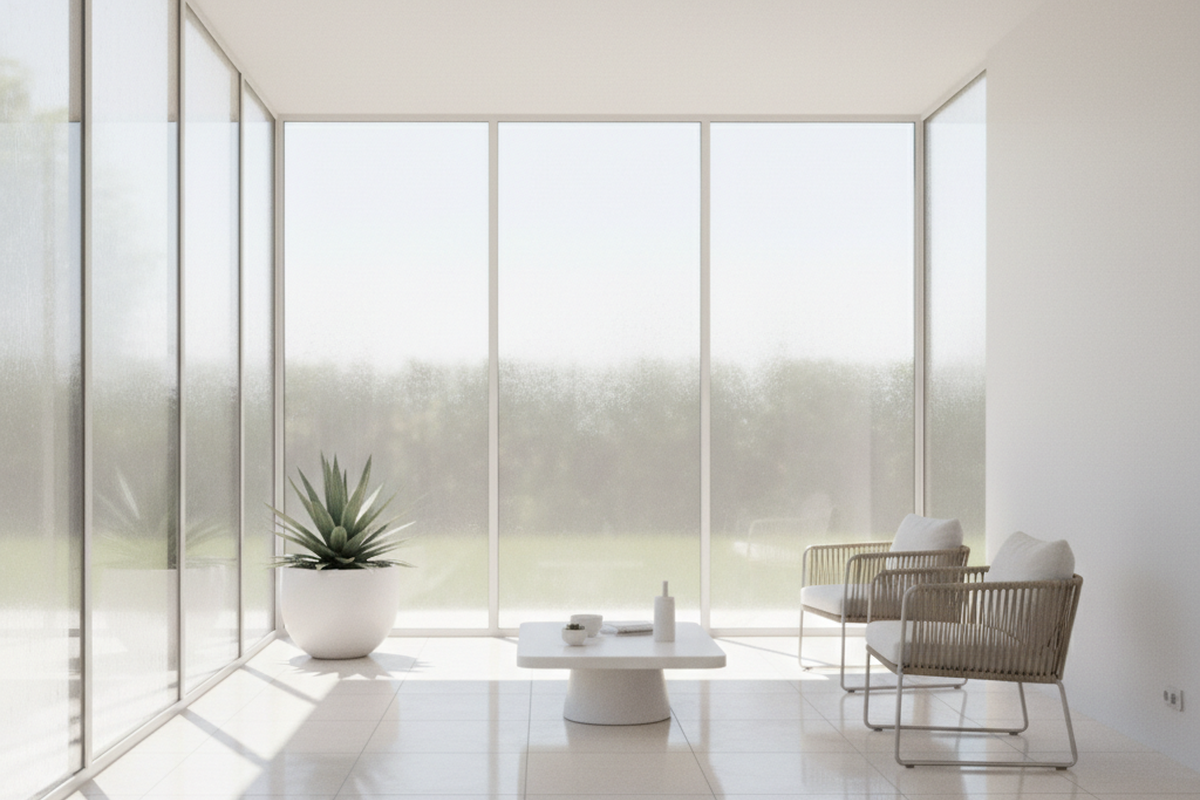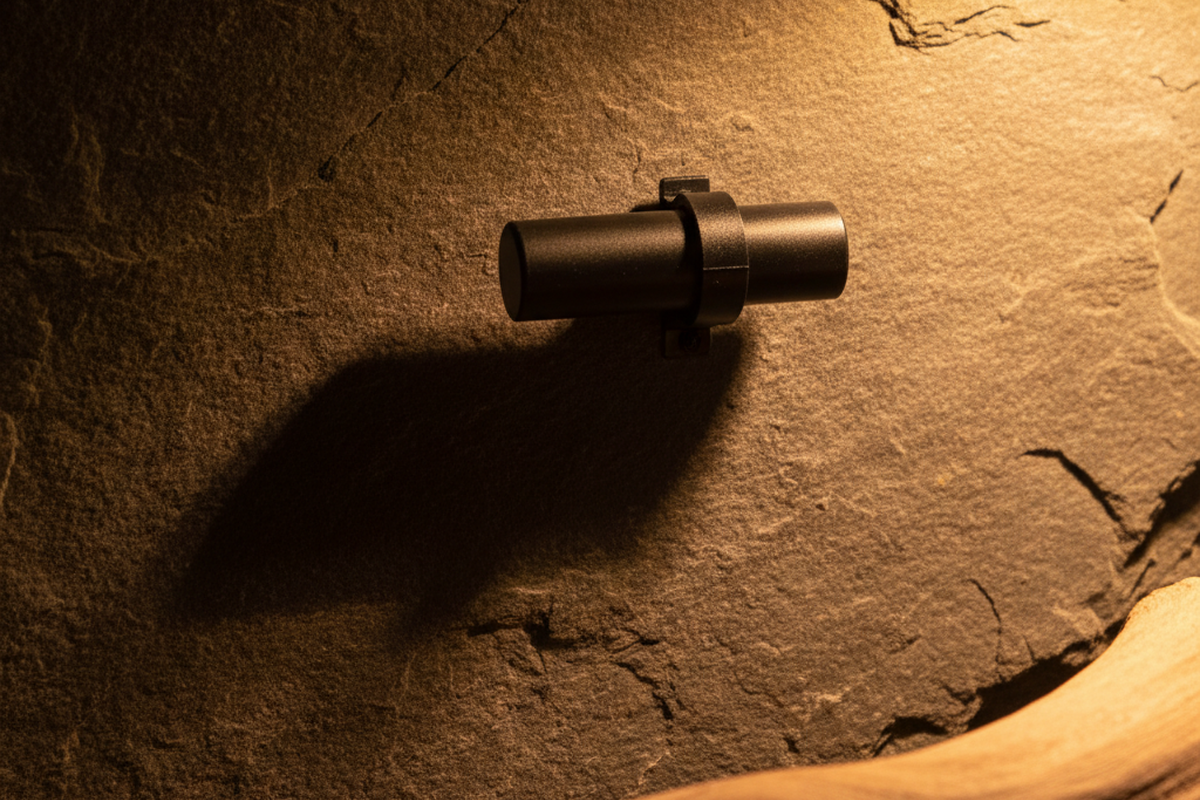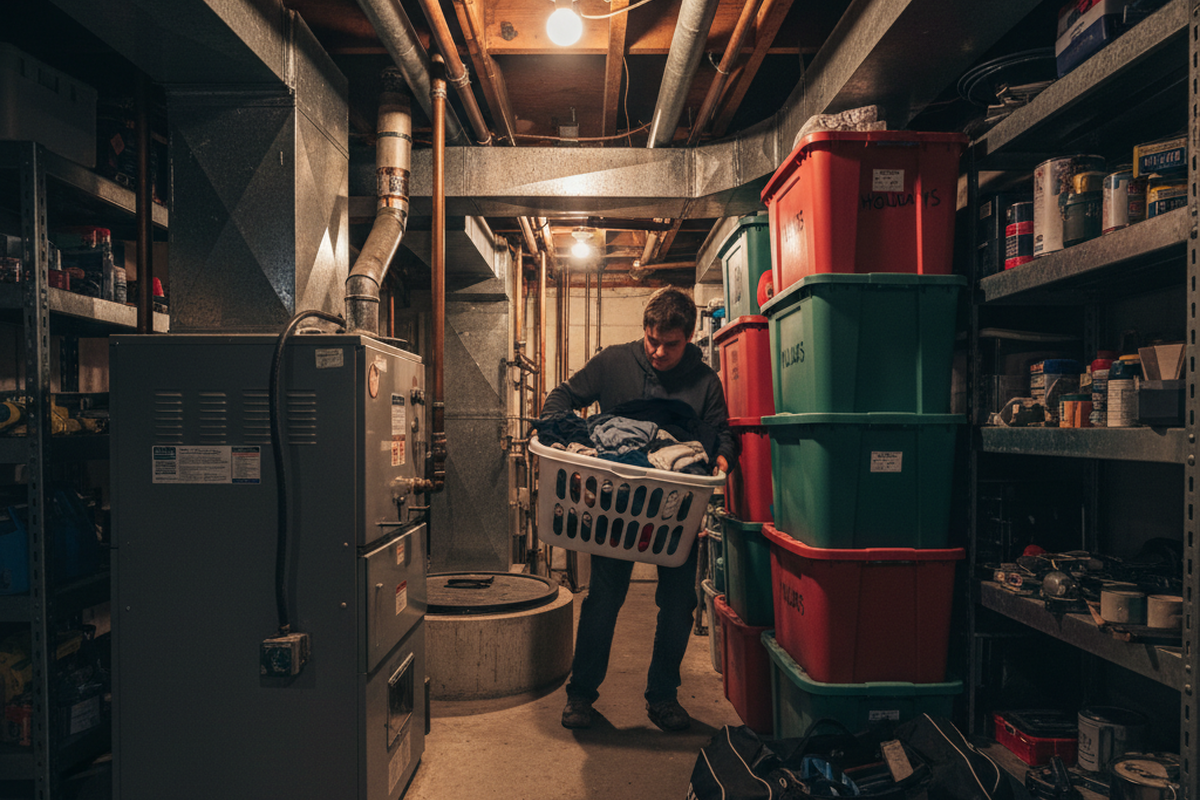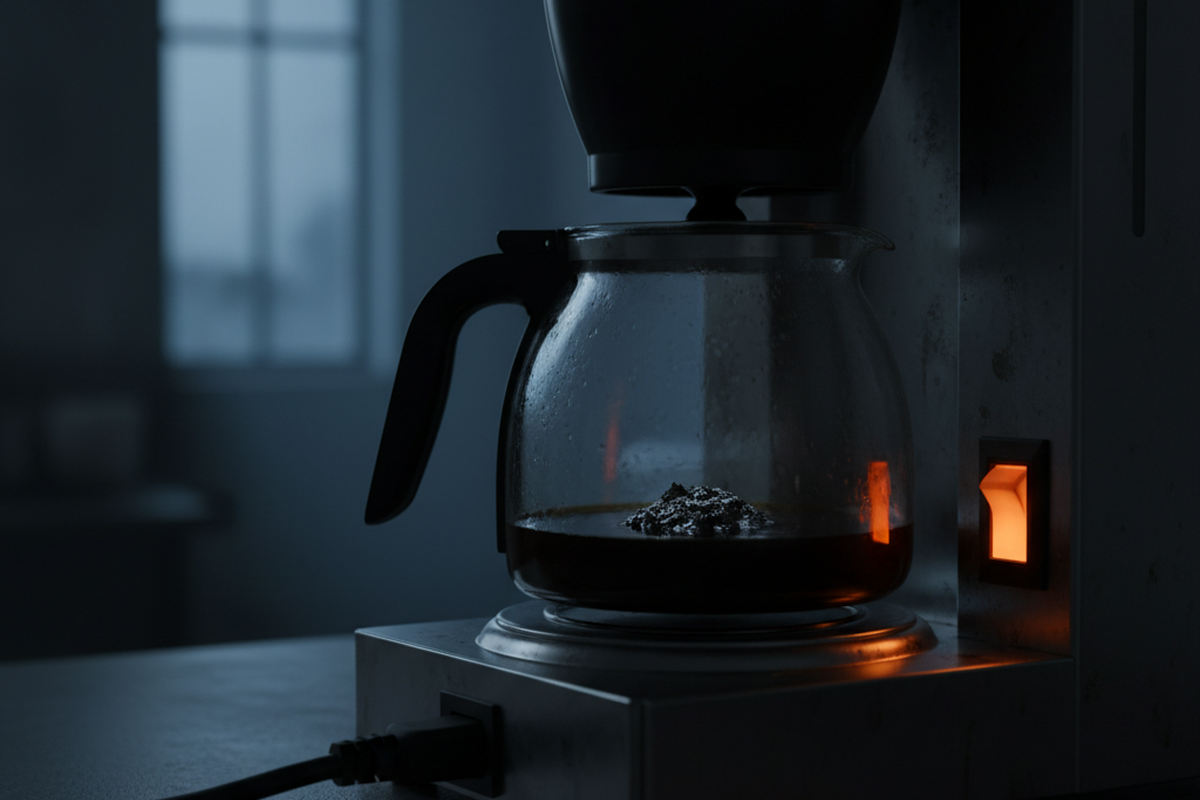Vi s-a întâmplat vreodată să vă sufocați într-o cameră în care aerul condiționat central pare să nu poată ajunge? Sau poate sunteți un chiriaș care caută o soluție de răcire care să nu implice modificări permanente? Aici intră în joc aparatele de aer condiționat portabile. Un aparat de aer condiționat portabil este o unitate de răcire autonomă, mobilă, concepută pentru a asigura o răcire localizată într-o anumită zonă sau cameră. Spre deosebire de sistemele de aer condiționat centrale sau de fereastră, acesta este proiectat pentru a fi mutat cu ușurință și nu necesită instalare permanentă. Acest lucru le face o alegere populară pentru proprietarii de case, chiriași, persoane care locuiesc în apartamente mici sau cămine și pentru cei care au nevoie de soluții temporare de răcire.
În esență, un aparat de aer condiționat portabil este un aparat compact conceput pentru a răci o singură cameră sau zonă, oferind o alternativă flexibilă la unitățile de ferestre sau la aerul condiționat central. Aceste unități se caracterizează prin mobilitate, având de obicei roți pentru un transport ușor, un furtun de evacuare pentru evacuarea aerului cald și un sistem intern de refrigerare pentru răcirea aerului. Spre deosebire de unitățile de tip fereastră, care sunt fixate pe loc, aparatele de aer condiționat portabile se așează pe podea și pot fi mutate dintr-o cameră în alta, în funcție de necesități. Este important să rețineți că acestea sunt utilizate de obicei pentru a răci o singură cameră, nu o casă întreagă.
Tipuri de aparate de aer condiționat portabile
În ceea ce privește aparatele de aer condiționat portabile, veți întâlni în general două tipuri principale: modele cu un singur furtun și modele cu furtun dublu. Fiecare are propriul set de avantaje și dezavantaje, în special în ceea ce privește eficiența și capacitatea de răcire.
Aparate de aer condiționat portabile cu furtun unic
Unitățile cu un singur furtun sunt adesea cele mai comune și mai accesibile tipuri pe care le veți găsi pe piață. Acestea utilizează un singur furtun pentru a evacua aerul cald în exterior. Unitatea extrage aerul din cameră, îl răcește și apoi expulzează o parte din aerul din cameră, împreună cu aerul cald, prin furtun. Cu toate acestea, acest proces creează o ușoară presiune negativă a aerului în cameră. Ce înseamnă acest lucru? Înseamnă că aerul cald și necondiționat din alte zone poate fi aspirat, ceea ce poate reduce eficiența generală a unității. Acest efect este mai pronunțat în climatele foarte calde sau umede. În ciuda acestui fapt, modelele cu un singur furtun sunt, în general, potrivite pentru camere mai mici sau zone cu nevoi moderate de răcire și oferă un proces de instalare mai simplu comparativ cu omologii lor cu furtun dublu.
Aparate de aer condiționat portabile cu furtun dublu
Dacă sunteți în căutarea unei eficiențe sporite, aparatele de aer condiționat portabile cu două furtunuri sunt soluția potrivită. După cum sugerează și numele, aceste unități utilizează două furtunuri. Un furtun atrage aer proaspăt din exterior pentru a răci condensatorul, în timp ce celălalt evacuează aerul cald generat în timpul procesului. Acest design previne crearea unei presiuni negative a aerului în cameră, așa cum se întâmplă în cazul modelelor cu un singur furtun. Ca urmare, unitățile cu furtun dublu pot răci o cameră mai rapid și mai eficient. Acestea sunt potrivite în special pentru încăperile mari sau pentru zonele cu încărcături termice ridicate. Deși tind să fie mai scumpe și au o instalare puțin mai complexă din cauza celui de-al doilea furtun, performanța îmbunătățită justifică adesea investiția.
Cum funcționează aparatele de aer condiționat portabile
Ciclul de refrigerare
La baza fiecărui aparat de aer condiționat portabil se află ciclul de refrigerare, un proces fascinant bazat pe ciclul de refrigerare cu compresie de vapori. Acest ciclu implică un agent refrigerant, un fluid special care circulă printr-o buclă închisă, schimbându-și continuu starea între lichid și gaz. Să defalcăm etapele cheie:
- Evaporare: Procesul începe cu lichidul refrigerant care curge prin serpentina evaporatorului. Pe măsură ce aerul cald din cameră este suflat peste această serpentină, agentul frigorific absoarbe căldura, făcându-l să se evapore și să se transforme într-un gaz. Aici se întâmplă magia răcirii!
- Compresie: Apoi, agentul frigorific, acum un gaz cu presiune scăzută, intră în compresor. Această componentă esențială comprimă gazul, crescând semnificativ presiunea și temperatura acestuia. Gândiți-vă la ea ca la inima sistemului, care pompează agentul frigorific prin ciclu.
- Condensare: Gazul refrigerant fierbinte, de înaltă presiune, ajunge apoi la serpentina condensatorului. Aici, căldura absorbită din cameră, împreună cu căldura generată de compresor, este eliberată în aerul exterior. Pe măsură ce agentul frigorific pierde căldură, acesta se condensează înapoi într-un lichid.
- Expansiune: În cele din urmă, lichidul refrigerant de înaltă presiune trece printr-o supapă de expansiune. Această supapă reduce presiunea și temperatura agentului frigorific, pregătindu-l să înceapă din nou ciclul în evaporator.
Evacuarea aerului cald
Un aspect critic al procesului de răcire este evacuarea căldurii. Căldura absorbită din aerul din cameră, împreună cu căldura generată de compresor, trebuie să fie evacuată în exterior. Aici intervine furtunul de evacuare. Conectat la o fereastră sau la o gură de aerisire, furtunul transportă aerul cald departe de cameră. Modelele cu un singur furtun, după cum s-a menționat anterior, evacuează o parte din aerul răcit din cameră împreună cu aerul cald, în timp ce modelele cu furtun dublu utilizează aerul exterior pentru răcirea condensatorului, ceea ce duce la o eficiență mai mare.
Gestionarea condensului
Pe măsură ce aparatul de aer condiționat răcește camera, umiditatea din aer se condensează pe serpentina evaporatorului. Această apă condensată trebuie gestionată, iar majoritatea aparatelor de aer condiționat portabile dispun de sisteme pentru gestionarea acesteia.
Poate sunteți interesat de
- Tehnologie autoevaporantă: Multe modele moderne dispun de tehnologie autoevaporantă. Acest sistem inteligent evaporă condensul colectat și îl expulzează prin furtunul de evacuare, eliminând nevoia de golire manuală în majoritatea condițiilor.
- Evacuare prin gravitație: Unele modele dispun de un furtun de scurgere care permite scurgerea continuă. Acest lucru este deosebit de util în medii foarte umede, unde acumularea de condens poate fi excesivă.
- Cupa internă: Anumite modele colectează condensul într-o găleată internă care trebuie golită periodic. Deși această metodă este mai puțin convenabilă, este totuși o opțiune viabilă pentru gestionarea condensului.
Principii termodinamice de funcționare
Funcționarea unui aparat de aer condiționat portabil este guvernată de principii termodinamice fundamentale:
- Prima lege a termodinamicii: Această lege afirmă că energia se conservă. În contextul unui aparat de aer condiționat, aceasta înseamnă că căldura eliminată din încăpere, plus munca efectuată de compresor, este egală cu căldura respinsă în exterior.
- A doua lege a termodinamicii: Această lege dictează că căldura curge în mod natural de la un corp mai cald la unul mai rece. Cu toate acestea, ciclul de refrigerare utilizează munca (de la compresor) pentru a deplasa căldura împotriva acestui flux natural, transferând-o din camera mai rece către mediul exterior mai cald.
- Diagrama presiune-Entalpie: Această diagramă este un instrument valoros pentru vizualizarea schimbărilor de stare ale agentului frigorific de-a lungul ciclului. Punctele cheie ale diagramei includ expansiunea izotermică (strangularea), transferul izobar de căldură (evaporarea și condensarea) și compresia izentropică.
- Coeficient de performanță (COP): Acest parametru reprezintă raportul dintre puterea de răcire și puterea electrică absorbită. Un COP mai mare indică o eficiență mai mare, ceea ce înseamnă că unitatea poate furniza mai multă răcire pentru o anumită cantitate de energie consumată.
Analiza detaliată a ciclului de refrigerare
Să analizăm în profunzime complexitatea fiecărei etape a ciclului de refrigerare:
- Evaporator: Refrigerantul lichid cu presiune scăzută și temperatură scăzută intră în serpentina evaporatorului. Aerul cald al încăperii este suflat peste serpentină, provocând fierberea și evaporarea agentului frigorific. Acest proces absoarbe o cantitate semnificativă de căldură, cunoscută sub numele de căldura latentă de vaporizare. Aerul răcit este apoi recirculat în cameră, furnizând efectul de răcire dorit.
- Compresor: Agentul frigorific, acum un gaz cu presiune scăzută, intră în compresor. Funcția principală a compresorului este de a crește presiunea și temperatura gazului refrigerant. Aici se consumă cea mai mare parte a energiei electrice, deoarece compresorul face "munca" de a deplasa căldura împotriva fluxului său natural.
- Condensator: Gazul refrigerant de înaltă presiune și temperatură înaltă intră apoi în serpentina condensatorului. Aici, aerul exterior (în cazul modelelor cu furtun dublu) sau aerul din cameră (în cazul modelelor cu furtun simplu) este suflat peste serpentină. Acest lucru face ca agentul frigorific să se condenseze înapoi într-un lichid, eliberând căldura absorbită (căldura latentă de condensare) în mediul exterior.
- Supapă de expansiune: În cele din urmă, lichidul refrigerant de înaltă presiune trece printr-o supapă de expansiune, cunoscută și ca supapă de strangulare. Acest proces reduce presiunea și temperatura agentului frigorific, pregătindu-l să reintre în evaporator și să înceapă din nou ciclul. Procesul de expansiune este izenthalpic, ceea ce înseamnă că are loc la entalpie constantă.
Factori care afectează performanța de răcire
Mai mulți factori pot influența performanța de răcire a unui aparat de aer condiționat portabil:
- Temperatura ambiantă: Temperaturile exterioare ridicate reduc eficiența condensatorului, făcând unitatea să lucreze mai mult pentru a elimina căldura.
- Umiditate: Umiditatea ridicată crește încărcătura de căldură latentă, cerând unității să elimine mai multă umiditate din aer. Acest lucru poate reduce capacitatea sa de răcire sensibilă, care este capacitatea de a reduce temperatura aerului.
- Rata debitului de aer (CFM): Ratele mai mari ale debitului de aer duc, în general, la un transfer mai bun al căldurii, permițând unității să răcească camera mai repede. Cu toate acestea, un debit de aer mai mare poate crește și nivelul de zgomot.
- Încărcarea cu agent frigorific: O încărcătură incorectă de agent frigorific, fie prea mare, fie prea mică, poate afecta semnificativ performanța și eficiența.
- Eficiența compresorului: Eficiența compresorului este un determinant major al eficienței generale a sistemului. Un compresor mai eficient consumă mai puțină energie pentru aceeași cantitate de răcire.
- Proiectarea schimbătoarelor de căldură: Suprafața, densitatea aripioarelor și materialul serpentinelor evaporatorului și condensatorului afectează ratele de transfer de căldură. Suprafețele mai mari și aripioarele mai dense îmbunătățesc în general transferul de căldură.
- Izolație: Izolarea corespunzătoare a unității în sine și a camerei care este răcită minimizează aportul de căldură din împrejurimi, îmbunătățind eficiența.
- Scurgeri de aer: În cazul unităților cu un singur furtun, infiltrarea aerului din exterior din cauza presiunii negative poate reduce eficiența.
- Dinamica fluxului de aer: Proiectarea admiterii și evacuării aerului, inclusiv utilizarea difuzoarelor și amplasarea gurilor de ventilație, poate avea un impact semnificativ asupra tiparelor de flux de aer din încăpere. Acest lucru, la rândul său, afectează capacitatea unității de a răci eficient spațiul. În mod interesant, efectul Coandă, prin care un jet de fluid tinde să rămână atașat de o suprafață convexă, ar putea fi utilizat în proiectarea unor sisteme mai eficiente de distribuție a aerului în cadrul aparatelor de aer condiționat portabile.
Componentele cheie ale unui aparat de aer condiționat portabil
Să aruncăm o privire mai atentă la componentele esențiale care alcătuiesc un aparat de aer condiționat portabil:
Compresor
Compresorul este adesea considerat inima sistemului de refrigerare. Rolul său principal este de a comprima gazul refrigerant, crescând presiunea și temperatura acestuia. Există mai multe tipuri de compresoare, inclusiv compresoare rotative, cu piston și scroll. Cu toate acestea, compresoarele rotative sunt utilizate în mod obișnuit în unitățile portabile datorită dimensiunii lor compacte și funcționării relativ silențioase.
Condensator
Condensatorul este un schimbător de căldură în care gazul refrigerant fierbinte, de înaltă presiune, eliberează căldură aerului exterior. De obicei, este format din tuburi de cupru cu aripioare de aluminiu pentru a crește suprafața de transfer eficient al căldurii. Aparatele de aer condiționat portabile sunt răcite cu aer, ceea ce înseamnă că un ventilator suflă aer peste bobinele condensatorului pentru a disipa căldura.
Evaporator
Similar în construcție cu condensatorul, evaporatorul este un alt schimbător de căldură. Aici, agentul frigorific lichid absoarbe căldura din aerul din cameră, provocând evaporarea acestuia. De asemenea, evaporatorul este format din tuburi de cupru cu aripioare de aluminiu, iar un ventilator suflă aer peste serpentine pentru a răci încăperea.
Agent frigorific
Agentul frigorific este elementul vital al sistemului, un fluid care absoarbe și eliberează căldură în timpul ciclului de refrigerare. Aparatele de aer condiționat portabile moderne utilizează de obicei agenți frigorifici precum R-410A (un amestec) sau R-32 (din ce în ce mai popular datorită potențialului său mai scăzut de încălzire globală). Unitățile mai vechi pot utiliza R-22, dar acest agent frigorific este în curs de eliminare treptată din cauza potențialului său de diminuare a stratului de ozon.
Ventilator
Ventilatorul joacă un rol esențial în circulația aerului peste serpentinele evaporatorului și condensatorului. Acesta este de obicei un ventilator centrifugal sau o suflantă. Ventilatoarele cu turație variabilă sunt din ce în ce mai frecvente, deoarece pot îmbunătăți eficiența și reduce nivelul de zgomot prin ajustarea fluxului de aer în funcție de necesitățile de răcire.
Furtun de evacuare
Furtunul de evacuare este o componentă vitală care transportă aerul fierbinte de la condensator la exterior. Fabricat de obicei din plastic flexibil, lungimea și diametrul furtunului pot afecta fluxul de aer și eficiența. În general, se recomandă ca furtunul să fie cât mai scurt și mai drept posibil pentru a reduce la minimum rezistența fluxului de aer.
Rezervor de apă sau sistem de drenaj
Această componentă este responsabilă de colectarea sau gestionarea apei condensate eliminate din aer în timpul procesului de răcire. Sistemele autoevaporative, așa cum am discutat mai devreme, elimină nevoia de golire manuală în majoritatea condițiilor prin evaporarea condensului și expulzarea acestuia prin furtunul de evacuare. Sistemele de scurgere prin gravitație necesită o conexiune la o scurgere, în timp ce gălețile interne trebuie să fie golite periodic. Unele sisteme avansate pot chiar utiliza condensul colectat pentru prerăcirea serpentinei condensatorului, îmbunătățind și mai mult eficiența. De asemenea, se efectuează cercetări privind integrarea gestionării condensului în sistemele cu circuit închis pentru a minimiza risipa de apă.
Avantajele aparatelor portabile de aer condiționat
Aparatele de aer condiționat portabile oferă mai multe avantaje care le transformă într-o opțiune de răcire atractivă în diverse situații. Acestea portabilitate este o caracteristică remarcabilă, deoarece acestea pot fi mutate cu ușurință dintr-o cameră în alta cu ajutorul roților încorporate. Această flexibilitate este deosebit de utilă dacă trebuie să răciți doar anumite zone în momente diferite. Instalare ușoară este un alt avantaj semnificativ. Spre deosebire de sistemele de aer condiționat centrale sau cu ferestre, unitățile portabile nu necesită, în general, o instalare permanentă. Pur și simplu conectați furtunul de evacuare la o fereastră utilizând un kit de fereastră furnizat. Acest lucru le face ideale pentru răcire suplimentară, asigurând o răcire suplimentară a camerelor care nu sunt deservite corespunzător de un sistem central de aer condiționat.
În plus, aparatele de aer condiționat portabile permit zona de răcire, ceea ce înseamnă că puteți răci doar camera pe care o utilizați în prezent. Acest lucru poate duce la economii semnificative de energie în comparație cu răcirea întregii case cu un sistem central. Acestea sunt, de asemenea, o alegere excelentă pentru chiriașii care nu pot face modificări permanente ale spațiului lor de locuit, deoarece necesită fără modificări permanente. În cele din urmă, aparatele de aer condiționat portabile pot fi un eficiente din punct de vedere al costurilor pentru apartamentele sau casele mici, în special în comparație cu cheltuielile de instalare a aerului condiționat central.
Dezavantajele aparatelor portabile de aer condiționat
În timp ce aparatele de aer condiționat portabile oferă numeroase beneficii, acestea au și anumite dezavantaje de luat în considerare. Un dezavantaj notabil este eficiență scăzută în comparație cu unitățile pentru ferestre sau cu aerul condiționat central, în special în cazul modelelor cu un singur furtun. Acest lucru înseamnă că acestea pot consuma mai multă energie pentru a obține același nivel de răcire. În plus, sistemele lor capacitate de răcire limitată le face potrivite pentru răcirea unei singure camere, dar nu sunt ideale pentru spații mari sau camere multiple. Zgomot poate fi, de asemenea, un motiv de îngrijorare, deoarece compresorul și ventilatorul sunt amplasate în interiorul camerei, putând crea mai mult zgomot decât alte tipuri de aparate de aer condiționat.
The cerințe privind furtunul de evacuare poate fi incomod, deoarece trebuie să fie ventilat spre exterior printr-o fereastră sau altă deschidere, ceea ce poate limita opțiunile de amplasare. Modelele cu un singur furtun pot crea presiune negativă în cameră, atrăgând aer cald din exterior și reducând și mai mult eficiența. În cele din urmă, estetică ar putea fi un motiv de îngrijorare pentru unii, deoarece unitatea ocupă spațiu pe podea, iar furtunul de evacuare poate fi inestetic.
Inspiră-te din portofoliile senzorilor de mișcare Rayzeek.
Nu găsești ceea ce vrei? Nu vă faceți griji. Există întotdeauna modalități alternative de a vă rezolva problemele. Poate că unul dintre portofoliile noastre vă poate ajuta.
Utilizări și aplicații ale aparatelor portabile de aer condiționat
Aparatele de aer condiționat portabile își găsesc aplicații într-o varietate de contexte, în principal datorită flexibilității și ușurinței lor de utilizare. O aplicație comună este răcire suplimentară. Acestea pot fi utilizate pentru a stimula răcirea în încăperile care sunt prea calde, cum ar fi cele cu multă expunere la soare sau echipamente electronice generatoare de căldură. Răcire punctuală este o altă utilizare populară, în care unitatea asigură o răcire concentrată în anumite zone, cum ar fi un birou sau un dormitor.
În apartamente mici sau cămine, acolo unde unitățile de fereastră nu sunt permise sau practice, aparatele portabile de aer condiționat oferă o soluție viabilă de răcire. Acestea sunt, de asemenea, utile pentru răcire temporară cum ar fi în timpul reparațiilor HVAC sau în spații fără aer condiționat permanent. Garaje și ateliere, care nu sunt de obicei conectate la un sistem central de aer condiționat, pot beneficia de răcirea oferită de o unitate portabilă. Chiar și săli de servere pot utiliza aparate de aer condiționat portabile pentru răcire suplimentară sau de rezervă pentru a proteja echipamentele electronice sensibile.
Cum să alegeți un aparat de aer condiționat portabil
Selectarea aparatului de aer condiționat portabil potrivit implică luarea în considerare a mai multor factori cheie pentru a vă asigura că acesta vă satisface nevoile specifice.
Determinarea capacității corecte de răcire (BTU)
Capacitatea de răcire a unui aparat de aer condiționat este măsurată în unități termice britanice (BTU). Un indice BTU mai mare indică o putere de răcire mai mare. Factorul principal în determinarea BTU necesar este dimensiunea camerei. O regulă generală este de a utiliza 20 BTU per metru pătrat de spațiu de locuit. De exemplu, o cameră de 200 de picioare pătrate ar avea nevoie de aproximativ 4.000 BTU.
Cu toate acestea, este posibil să fie nevoie să faceți ajustări în funcție de alți factori:
- Plafoane înalte: Adăugați 10% la cerința BTU pentru tavane mai înalte de 8 picioare.
- Camere însorite: Creșteți capacitatea BTU cu 10-20% pentru camerele care primesc multă lumină solară directă.
- Bucătării: Adăugați 4.000 BTU dacă unitatea va fi utilizată într-o bucătărie, deoarece gătitul generează căldură semnificativă.
- Mai mult de doi ocupanți: Adăugați 600 BTU pentru fiecare persoană suplimentară care ocupă în mod regulat camera.
Evaluarea dimensiunii camerei și a izolației
Măsurarea exactă a camerei este esențială. Măsurați lungimea și lățimea pentru a calcula metrajul pătrat. Calitatea izolației joacă, de asemenea, un rol semnificativ. Camerele slab izolate vor necesita o capacitate de răcire mai mare, deoarece pierd aer rece mai ușor. Dimensiunea și tipul ferestrei sunt considerente importante. Ferestrele mari, în special cele orientate spre sud sau vest, pot crește aportul de căldură. Ferestrele cu un singur geam oferă mai puțină izolare decât ferestrele cu geam dublu, ceea ce poate necesita o unitate BTU mai mare. Umbrire pot contribui la atenuarea câștigului de căldură. Camerele bine umbrite de copaci sau copertine pot necesita mai puțină capacitate de răcire.
Luarea în considerare a nivelurilor de zgomot
Nivelul de zgomot este adesea un motiv de îngrijorare în cazul aparatelor portabile de aer condiționat. Producătorii furnizează adesea valori ale nivelului de zgomot în decibeli (dB). Majoritatea aparatelor de aer condiționat portabile funcționează în intervalul 50-60 dB. Cu toate acestea, toleranța la zgomot variază de la o persoană la alta. Viteza ventilatorului este un factor, vitezele mai mici fiind în general mai silențioase. Caracteristicile tip compresor joacă de asemenea un rol, compresoarele rotative fiind de obicei mai silențioase decât compresoarele cu piston.
Evaluarea ratingurilor de eficiență energetică
Eficiența energetică este un aspect crucial, atât din motive de mediu, cât și pentru a minimiza costurile de exploatare. Pentru evaluarea eficienței se utilizează mai multe clasificări:
- EER (rata de eficiență energetică): Aceasta se calculează prin împărțirea puterii de răcire (BTU) la puterea absorbită (wați) la o anumită temperatură exterioară (95°F). Un EER mai mare indică o eficiență mai mare.
- CEER (rata combinată de eficiență energetică): Aceasta este o măsură mai nouă care ia în considerare consumul de energie în modul de așteptare, precum și în timpul răcirii active, oferind o măsură mai cuprinzătoare a eficienței.
- SEER (Seasonal Energy Efficiency Ratio): În timp ce SEER este utilizat în mod obișnuit pentru sistemele centrale de aer condiționat, acesta nu este utilizat de obicei pentru sistemele portabile de aer condiționat.
- Certificare ENERGY STAR: Această certificare indică faptul că unitatea îndeplinește anumite standarde de eficiență energetică stabilite de Agenția pentru Protecția Mediului (EPA).
Compararea modelelor cu un singur furtun cu cele cu două furtunuri
Alegerea între un model cu un singur furtun și unul cu două furtunuri depinde de prioritățile dvs. și de mediul specific pe care intenționați să îl răciți.
- Eficiență: Modelele cu furtun dublu oferă, în general, o eficiență superioară deoarece nu creează o presiune negativă a aerului în cameră, spre deosebire de unitățile cu furtun unic. Acest lucru înseamnă că este mai puțin probabil să atragă aer cald, necondiționat, din exterior.
- Viteza de răcire: Datorită eficienței lor îmbunătățite, modelele cu două furtunuri tind să răcească camerele mai repede decât modelele cu un singur furtun.
- Cost: Modelele cu un singur furtun sunt de obicei mai puțin costisitoare decât modelele cu două furtunuri.
- Instalare: În timp ce ambele tipuri sunt relativ ușor de instalat, modelele cu două furtunuri au un proces de instalare puțin mai complex din cauza celui de-al doilea furtun.
Recomandare: Dacă aveți de-a face cu încăperi mai mari, climă caldă sau situații în care eficiența energetică este o prioritate absolută, un model cu două furtunuri este probabil cea mai bună alegere. Pentru încăperi mai mici sau nevoi moderate de răcire, un model cu un singur furtun poate fi suficient și vă poate economisi niște bani la început. Este demn de remarcat faptul că, deși modelele cu două furtunuri sunt teoretic mai eficiente, performanța reală poate fi influențată de factori precum ratele de infiltrare a aerului și etanșeitatea anvelopei clădirii. Metodele de testare standardizate nu pot surprinde întotdeauna pe deplin aceste nuanțe.
Cum să instalați un aparat de aer condiționat portabil
Cerințe pentru utilizarea unui aparat de aer condiționat portabil
Înainte de a instala un aparat de aer condiționat portabil, este esențial să vă asigurați că îndepliniți cerințele necesare pentru buna funcționare:
Căutați soluții de economisire a energiei activate prin mișcare?
Contactați-ne pentru senzori de mișcare PIR complecși, produse de economisire a energiei activate de mișcare, întrerupătoare cu senzor de mișcare și soluții comerciale de ocupare/vacanță.
Compatibilitatea prizelor electrice
- Tensiune: Majoritatea aparatelor de aer condiționat portabile sunt proiectate să funcționeze la prize electrice standard de 115/120 V în America de Nord.
- Amperaj: Verificați cerințele de amperaj ale unității și asigurați-vă că priza pe care intenționați să o utilizați poate face față sarcinii.
- Circuit dedicat: Pentru a preveni supraîncărcarea, se recomandă adesea utilizarea unui circuit dedicat pentru aparatul de aer condiționat.
- Evitați cablurile prelungitoare: Utilizarea prelungitoarelor poate reprezenta un pericol pentru siguranță și poate reduce, de asemenea, performanța unității. Cel mai bine este să conectați unitatea direct la o priză de perete.
Fereastră sau acces la ventilație
- Furtun de evacuare: Toate aparatele de aer condiționat portabile (cu excepția aparatelor de răcire prin evaporare, care funcționează diferit) necesită aerisire către exterior prin intermediul unui furtun de evacuare.
- Kit fereastră: Cele mai multe unități vin cu un kit pentru ferestre proiectat pentru a se potrivi ferestrelor culisante orizontale sau verticale standard.
- Ventilație alternativă: În cazul în care o fereastră nu este disponibilă sau potrivită, aparatele de aer condiționat portabile pot fi ventilate printr-un perete, plafon sau chiar o ușă glisantă de sticlă, cu modificările corespunzătoare.
Cerințe de spațiu
- Eliberare: Păstrați un spațiu liber adecvat în jurul unității pentru a asigura un flux de aer adecvat. De obicei, se recomandă un spațiu liber de 12-20 de centimetri pe toate laturile.
- Lungimea furtunului: Păstrați furtunul de evacuare cât mai scurt și mai drept posibil pentru performanțe optime. Un furtun mai lung și îndoit poate restricționa fluxul de aer și reduce eficiența.
- Spațiu de podea: Amintiți-vă că unitatea în sine ocupă spațiu pe podea, deci luați în considerare aspectul camerei și asigurați-vă că există suficient spațiu pentru ca unitatea să fie amplasată confortabil.
Instalarea ferestrelor
Instalarea unui aparat de aer condiționat portabil într-o fereastră este un proces relativ simplu:
- Măsurați deschiderea ferestrei: Începeți prin a măsura deschiderea ferestrei pentru a vă asigura că setul de ferestre furnizat se va potrivi corect.
- Instalați suportul ferestrei: Asamblați kitul de fereastră în conformitate cu instrucțiunile producătorului și instalați-l bine în deschiderea ferestrei.
- Conectați furtunul de evacuare: Atașați un capăt al furtunului de evacuare la partea din spate a aparatului de aer condiționat și celălalt capăt la suportul ferestrei.
- Sigilați lacunele: Folosiți burdufuri sau spumă izolatoare pentru a etanșa orice spațiu liber din jurul suportului ferestrei și al furtunului. Acest lucru va ajuta la prevenirea scurgerilor de aer și la îmbunătățirea eficienței.
- Furtun securizat: Asigurați-vă că furtunul este bine conectat la ambele capete și că nu există îndoituri sau blocaje care ar putea restricționa fluxul de aer.
Ventilație de perete (instalare avansată)
Aerisirea unui aparat de aer condiționat portabil printr-un perete este un proces mai complicat care necesită tăierea unei găuri într-un perete exterior.
- Necesită tăierea unei găuri: Această metodă este mai permanentă și implică crearea unei deschideri în perete pentru a găzdui furtunul de evacuare.
- Instalare profesională recomandată: Dacă nu aveți experiență în domeniul construcțiilor și al sistemelor HVAC, în general este mai bine să angajați un profesionist pentru ventilarea pereților.
- Etanșare corespunzătoare: Asigurați-vă că gaura este etanșată corespunzător pentru a preveni scurgerile de aer și apă, care ar putea deteriora locuința sau reduce eficiența unității.
- Capac de aerisire exterior: Instalați un capac de aerisire pe partea exterioară a peretelui pentru a preveni pătrunderea dăunătorilor, a resturilor și a elementelor meteorologice prin aerisire.
Cum să întrețineți un aparat de aer condiționat portabil
Întreținerea corespunzătoare este esențială pentru a menține funcționarea eficientă a aparatului de aer condiționat portabil și pentru a-i prelungi durata de viață.
Curățarea filtrului de aer
- Frecvența: Curățați filtrul de aer la fiecare 2-4 săptămâni, în funcție de utilizare și de calitatea aerului. Dacă utilizați frecvent unitatea sau aveți animale de companie, este posibil să fie necesar să îl curățați mai des.
- Importanță: Un filtru de aer curat asigură un flux de aer adecvat și previne pătrunderea în unitate a prafului, murdăriei și a altor resturi care pot cauza deteriorări sau pot reduce performanța.
- Procedură:
- Opriți și scoateți din priză aparatul de aer condiționat.
- Localizați și scoateți filtrul de aer. Acesta se află, de obicei, în spatele unui panou de pe partea din spate sau laterală a unității.
- Spălați filtrul cu apă și săpun ușor sau utilizați un aspirator cu atașament pentru perie pentru a îndepărta praful și resturile acumulate.
- Clătiți bine filtrul și lăsați-l să se usuce complet înainte de a-l reinstala.
Golirea rezervorului de apă
- Frecvența: Frecvența vidanjării depinde de modelul specific și de nivelurile de umiditate din zona dumneavoastră. Este posibil ca modelele autoevaporative să nu necesite vidanjare manuală în condiții normale, în timp ce alte modele pot necesita vidanjare mai frecventă în climatele umede.
- Procedură:
- Opriți și scoateți unitatea din priză.
- Localizați dopul de scurgere sau rezervorul de apă. Acesta se găsește de obicei în partea de jos din spate a unității.
- Puneți un recipient puțin adânc sub dopul de scurgere sau scoateți rezervorul de apă.
- Deschideți dopul de scurgere sau goliți rezervorul pentru a elibera apa colectată.
- Înlocuiți dopul de scurgere sau reintroduceți rezervorul de apă.
Curățarea bobinelor
- Frecvența: Curățați serpentinele anual sau după cum este necesar. Dacă observați o acumulare semnificativă de praf sau resturi, este timpul pentru o curățare.
- Importanță: Acumularea de praf și resturi pe serpentinele condensatorului și evaporatorului poate reduce eficiența transferului de căldură, făcând unitatea să lucreze mai mult și să consume mai multă energie.
- Procedură:
- Opriți și scoateți unitatea din priză.
- Scoateți învelișul exterior al aparatului de aer condiționat. Consultați manualul de utilizare pentru instrucțiuni despre cum să faceți acest lucru în siguranță.
- Utilizați o perie moale sau un aspirator cu accesoriu pentru perie pentru a curăța ușor serpentinele condensatorului și evaporatorului. Aveți grijă să nu îndoiți sau să deteriorați aripioarele delicate.
- Pentru murdăria sau murdăria persistentă, puteți utiliza un spray de curățare a serpentinei special conceput pentru aparate de aer condiționat. Urmați instrucțiunile de pe eticheta produsului.
Inspectarea furtunului de evacuare
- Frecvența: Inspectați periodic furtunul de evacuare pentru a vă asigura că este în stare bună.
- Importanță: Un furtun blocat, îndoit sau deteriorat poate restricționa fluxul de aer și reduce eficiența unității.
- Procedură:
- Inspectați vizual furtunul pentru a depista orice fisuri, găuri sau obstrucții.
- Asigurați-vă că furtunul este bine conectat la ambele capete (la unitate și la suportul ferestrei sau la ventilator).
- Dacă găsiți vreo deteriorare, înlocuiți furtunul cu unul nou.
Costurile aparatelor portabile de aer condiționat
Intervalul prețurilor de cumpărare
Aparatele de aer condiționat portabile sunt disponibile la prețuri diferite, în funcție de caracteristicile, capacitatea de răcire și eficiența lor:
- Modele bugetare: De obicei, variază de la $200 la $400. Acestea sunt, de obicei, unități cu un singur furtun cu valori BTU mai mici, potrivite pentru încăperi mai mici.
- Modele Mid-Range: Cu prețuri cuprinse între $400 și $700, aceste modele oferă o combinație de opțiuni cu furtun simplu și dublu, valori BTU mai mari și mai multe caracteristici, precum cronometre programabile și telecomenzi.
- Modele High-End: Cost $700 și peste. Acestea sunt de obicei unități cu furtun dublu, cu valori BTU ridicate, caracteristici avansate și funcționare mai silențioasă, potrivite pentru încăperi mai mari sau pentru cei care caută performanțe premium.
Costuri de exploatare și consum de energie
Costul de funcționare a unui aparat de aer condiționat portabil depinde de mai mulți factori, inclusiv de puterea sa BTU, EER/CEER, modelele de utilizare și tarifele locale la energia electrică. De exemplu, o unitate de 10 000 BTU cu un EER de 10 utilizată timp de 8 ore pe zi la o rată a energiei electrice de $0,15/kWh ar costa aproximativ $1,20 pe zi pentru funcționare.
Mai mulți factori influențează costurile de exploatare:
- Clima: Climatele mai calde necesită o funcționare mai frecventă și mai îndelungată, crescând consumul de energie.
- Dimensiunea camerei: Camerele mai mari necesită mai multă energie pentru răcire decât camerele mai mici.
- Izolație: Camerele slab izolate pierd mai mult aer rece, forțând unitatea să lucreze mai mult și să consume mai multă energie.
- Obiceiuri de utilizare: Funcționarea constantă a unității la cea mai scăzută temperatură va consuma mult mai multă energie decât utilizarea unei temperaturi mai ridicate sau a unui temporizator programabil.
Defalcare detaliată a costurilor
Atunci când luați în considerare costul total al deținerii unui aparat de aer condiționat portabil, este esențial să priviți dincolo de prețul inițial de achiziție:
- Prețul inițial de cumpărare: Acesta este costul inițial al unității în sine.
- Costuri de instalare: Acestea pot include costul unui set de ferestre, orice modificări necesare pentru ventilarea pereților sau taxe de instalare profesională (dacă este necesar).
- Consumul de energie: Acesta este costul curent al energiei electrice utilizate pentru funcționarea unității. Acesta este influențat de factori precum modelele de utilizare, clima și tarifele locale la electricitate.
- Costuri de întreținere: Acestea includ costul de înlocuire a filtrelor de aer, a consumabilelor de curățare și eventualele costuri de reparații pe durata de viață a unității.
Factori care influențează costurile de exploatare
Mai mulți factori cheie pot avea un impact semnificativ asupra costurilor de funcționare ale aparatului dvs. portabil de aer condiționat:
- Rating de eficiență energetică (EER/CEER): Ratingurile EER și CEER mai ridicate indică o eficiență energetică mai mare, ceea ce se traduce prin costuri de operare mai mici.
- Modele climatice și meteorologice: Climele calde și umede cresc volumul de muncă al aparatului de aer condiționat, ceea ce duce la un consum mai mare de energie.
- Frecvența și durata de utilizare: O utilizare mai frecventă și mai îndelungată va duce în mod natural la costuri de exploatare mai mari.
- Setarea termostatului: Setările mai joase ale termostatului necesită ca unitatea să lucreze mai mult și să consume mai multă energie.
- Dimensiunea camerei și izolarea: Încăperile mai mari și cele cu izolație slabă necesită mai multă energie pentru a fi răcite eficient.
- Tarife locale de electricitate: Creșterea tarifelor la energia electrică în zona dvs. va avea un impact direct asupra costurilor dvs. de exploatare.
Comparații pe termen lung ale costurilor cu alte sisteme
Atunci când evaluați rentabilitatea pe termen lung a unui aparat de aer condiționat portabil, este util să îl comparați cu alte sisteme de răcire:
- AC portabil vs. AC de fereastră: Aparatele de aer condiționat portabile au, în general, costuri de exploatare mai mari decât unitățile de fereastră cu o capacitate de răcire similară. Acest lucru se datorează în primul rând ratingurilor lor mai scăzute de eficiență energetică.
- AC portabil vs. AC central: Aerul condiționat central este mai eficient pentru răcirea unei case întregi. Cu toate acestea, aparatele de aer condiționat portabile pot fi mai rentabile pentru răcirea unei singure încăperi sau ca soluție suplimentară de răcire, mai ales dacă se ia în considerare costul ridicat al investiției inițiale în aerul condiționat central.
Factori de luat în considerare în cadrul comparației:
- Investiție inițială: Sistemele centrale de aer condiționat au un cost inițial semnificativ mai mare în comparație cu unitățile portabile sau de fereastră.
- Eficiență energetică: Sistemele centrale de aer condiționat sunt, în general, mai eficiente din punct de vedere energetic, în special pentru casele mai mari.
- Modele de utilizare: Dacă trebuie să răciți doar una sau două camere, un aparat de aer condiționat portabil poate fi mai rentabil pe termen lung, chiar și cu eficiența sa mai scăzută.
- Dimensiunea și configurația casei: Aerul condiționat central este mai potrivit pentru casele mai mari, cu mai multe camere care trebuie răcite simultan.
În timp ce mai mulți factori influențează costurile de funcționare ale aparatului dvs. portabil de aer condiționat, una dintre cele mai eficiente modalități de a reduce consumul de energie este să vă asigurați că acesta funcționează doar atunci când este necesar. **Rayzeek RZ050 Air Conditioner Motion Sensor** face exact acest lucru, oprind automat aerul condiționat atunci când o cameră este neocupată.
Preia controlul asupra costurilor de funcționare ale aparatului tău de aer condiționat portabil cu **Rayzeek RZ050**. Acest senzor inteligent vă ajută să economisiți bani prin eliminarea consumului inutil de energie. Este o investiție inteligentă care se poate amortiza în timp prin reducerea facturilor de energie.
Rayzeek RZ050 Senzor de mișcare pentru aerul condiționat
Reduceți facturile la energie, rămâneți rece automat.
- Oprește automat aerul condiționat atunci când părăsiți camera.
- Economisiți până la 50% la costurile de răcire.
- Configurare ușoară, compatibilă cu majoritatea AC-urilor controlate de la distanță.
Cu Rayzeek RZ050, vă puteți bucura de confortul aparatului dvs. portabil de aer condiționat fără să vă faceți griji cu privire la costurile excesive de energie. Este un instrument simplu, dar puternic pentru gestionarea cheltuielilor de răcire.
Aparate de aer condiționat portabile vs. alte sisteme de răcire
AC portabil vs. AC de fereastră
- Eficiență: Aparatele de aer condiționat de tip fereastră sunt, în general, mai eficiente decât unitățile portabile. Acestea au de obicei ratinguri EER și SEER mai ridicate, ceea ce înseamnă că consumă mai puțină energie pentru aceeași cantitate de răcire.
- Capacitate de răcire: Aparatele de aer condiționat pentru ferestre au adesea capacități de răcire mai mari pentru o anumită dimensiune, comparativ cu unitățile portabile.
- Zgomot: Aparatele de aer condiționat cu fereastră pot fi mai silențioase deoarece compresorul, care este o sursă majoră de zgomot, este amplasat în afara ferestrei.
- Instalare: Aparatele de aer condiționat cu fereastră necesită o instalare mai permanentă într-o fereastră, ceea ce poate fi un dezavantaj pentru unii.
- Portabilitate: Aparatele de aer condiționat portabile oferă avantajul de a putea fi mutate dintr-o cameră în alta, în timp ce aparatele de aer condiționat cu fereastră sunt fixate în poziție.
- Obstrucție: Aparatele de aer condiționat cu fereastră blochează o parte din vederea ferestrei, în timp ce unitățile portabile nu obstrucționează ferestrele.
- Cost: Aparatele de aer condiționat pentru ferestre sunt de obicei mai puțin costisitoare decât unitățile portabile cu o capacitate de răcire comparabilă.
Aer condiționat portabil vs. aer condiționat central
- Eficiență: Aerul condiționat central este mult mai eficient decât unitățile portabile atunci când vine vorba de răcirea unei case întregi.
- Capacitate de răcire: Sistemele centrale de aer condiționat au capacități de răcire mult mai mari și sunt concepute pentru a răci mai multe camere sau o casă întreagă.
- Instalare: Aerul condiționat central necesită instalare profesională, inclusiv conducte în întreaga casă, ceea ce îl face mai complex și mai costisitor.
- Cost: Aerul condiționat central are un cost inițial mult mai ridicat din cauza echipamentelor și a cerințelor de instalare. Cu toate acestea, poate avea costuri de operare mai mici pentru răcirea întregii case datorită eficienței sale mai ridicate.
- Zonare: Sistemele centrale de aer condiționat pot fi zonate, permițându-vă să răciți diferite zone ale casei în mod independent, ceea ce poate economisi energie.
- Calitatea aerului: Sistemele centrale de aer condiționat au adesea capacități mai bune de filtrare a aerului, ceea ce poate îmbunătăți calitatea aerului din interior.
AC portabil vs. răcitoare evaporative
- Mecanism: Răcitoarele evaporative, cunoscute și sub denumirea de swamp coolers, utilizează un mecanism de răcire diferit de cel al aparatelor de aer condiționat portabile. Acestea răcesc aerul prin evaporarea apei, în timp ce AC-urile portabile utilizează un ciclu de refrigerare.
- Clima: Răcitoarele evaporative sunt eficiente în climatele uscate cu umiditate scăzută, dar nu sunt eficiente în climatele umede. Aparatele de aer condiționat portabile funcționează bine atât în condiții uscate, cât și umede.
- Eficiență: Răcitoarele evaporative sunt, în general, mai eficiente din punct de vedere energetic decât AC-urile portabile, deoarece nu utilizează un compresor.
- Cost: Răcitoarele evaporative sunt de obicei mai puțin costisitoare de achiziționat decât aparatele de aer condiționat portabile.
- Utilizarea apei: Răcitoarele evaporative consumă apă, în timp ce AC-urile portabile nu (cu excepția condensului care trebuie gestionat).
- Reducerea temperaturii: Răcitoarele evaporative asigură o scădere mai mică a temperaturii în comparație cu AC-urile portabile, de obicei în jur de 15-20°F.
AC portabil vs. ventilatoare
- Mecanism: Ventilatoarele fac aerul să circule, dar nu scad de fapt temperatura aerului. Acestea oferă o senzație de răcire prin evaporare pe piele. Aparatele de aer condiționat portabile, pe de altă parte, răcesc activ aerul folosind un ciclu de refrigerare.
- Eficacitate: Ventilatoarele pot oferi o oarecare ușurare în condiții de căldură moderată, dar sunt mai puțin eficiente în vreme foarte caldă sau umedă. Aparatele de aer condiționat portabile sunt mai eficiente în ceea ce privește scăderea temperaturii aerului și asigurarea unui mediu mai confortabil.
- Consumul de energie: Ventilatoarele consumă mult mai puțină energie decât aparatele de aer condiționat portabile, ceea ce le face o opțiune mai eficientă din punct de vedere energetic pentru nevoile de răcire ușoară.
- Cost: Ventilatoarele sunt mult mai puțin costisitoare de achiziționat decât aparatele de aer condiționat portabile.
- Zgomot: Ventilatoarele pot fi mai silențioase decât AC-urile portabile, în special la viteze mai mici.
Acest ghid cuprinzător oferă o înțelegere aprofundată a aparatelor de aer condiționat portabile, acoperind tipurile acestora, funcționarea, avantajele, dezavantajele, aplicațiile, criteriile de selecție, instalarea, întreținerea, costurile și comparațiile cu alte sisteme de răcire. Fie că sunteți proprietar de locuință, chiriaș sau pur și simplu o persoană care caută o soluție de răcire flexibilă, aceste informații vă vor ajuta să luați o decizie în cunoștință de cauză cu privire la faptul dacă un aparat de aer condiționat portabil este alegerea potrivită pentru dvs. Nu uitați să luați în considerare nevoile dvs. specifice, bugetul și caracteristicile unice ale spațiului dvs. de locuit atunci când faceți selecția.

